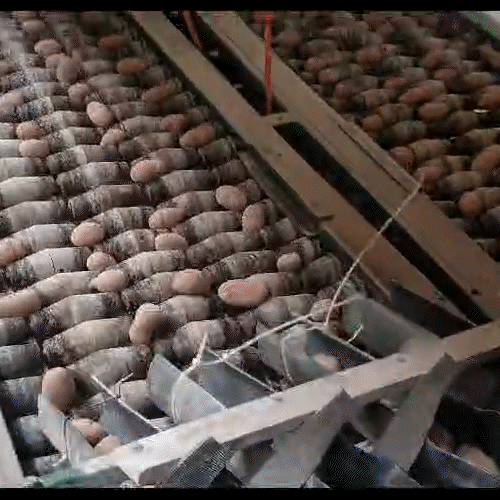
Introduction: Our regional commitment in the community of Bersenbrück
The start at EWOQE marked the beginning of an ambitious expedition. With determination and the firm goal of making significant progress in the B2B sector in mind, we set out to forge new partnerships.
As a modern company, we have prepared ourselves from the outset to operate globally in the dynamic world of Industry 4.0. The fruits of these efforts are visible today in the form of business relationships across Europe, Asia and the USA – a far-reaching network.
The diversity of our projects shows that innovation often starts where you least expect it. In the peaceful community of Bersenbrück, which includes our Eggermühlen facility, one such opportunity presented itself. Despite its rural charm, the region is a vibrant economic area filled with medium-sized companies.
Our latest collaboration with a local farmer is not only a testament to the adaptability of 3D printing technology, but also an exciting chapter that shows how EWOQE turns challenges into successes.
What is the link between 5000 tons of potatoes and 3d printing?
In agriculture, businesses often rely on customized equipment and machinery designed specifically for their needs. However, this individuality comes with a price: an expensive dependence on the manufacturers of this specialized equipment. One example that illustrates this situation is a 2015 report by Heise Verlag on the right of farmers to repair their John Deere tractors themselves. These machines refused to work if a “third-party repair” was carried out.
Due to costly support contracts and repairs, manufacturers are inclined to retain their customers through these, which in turn puts farmers in an disadvantageous position.
The farmer we worked with faced a significant challenge: His potato cutting machine, a critical tool for preparing seedlings, was at a standstill. The reason for this was a lack of spare parts, which could not be procured in a timely manner due to long delivery times.
Innovative approaches meets traditional markets
The feasibility of the 3D printed parts was carefully assessed to ensure they met the requirements of the cutting machine and no compromises were made.
The challenge began with defining the exact requirements for the rolling cones, focusing on factors such as weather resistance, hardness and impact resistance. After careful consideration, we decided on ASA+ as a suitable material to meet the requirements.
Fig. 1.1: Seven development runs were necessary to meet all the requirements.
Once the material question had been clarified, the actual development process began. After several runs, seven iterations in total, we succeeded in creating a version of the spare parts that fully met the requirements.
These careful adjustments made it possible to produce the parts more efficiently. This not only allowed us to find a customized solution for the spare parts, but also made a significant contribution to a more cost-effective production method. Our customer can continue to operate their potato slicing machine without significant downtime.
With the adaptation and completion of the design for the 3D-printed spare parts, we were finally able to get started with the production of a total of 1000 cones.
Do our spare parts meet the requirements?
The redesign of the cones for the conveyor belt using the 3D printing process brought noticeable improvements. Not only has the performance of the conveyor belt been optimized, but the durability of the cones has also increased significantly. Our more resistant cones mean that maintenance work is required less frequently and the need for spare parts is reduced. This has a direct positive effect on operating costs.
The increased wear resistance is a key element that contributes to the longevity of the conveyor belt, making the investment in 3D printed parts profitable in the long run. It shows how important it is to choose the right material and a well thought-out design when manufacturing spare parts using 3D printing.


Learning from Bersenbrück: How regional customer relationships make the difference
Our excursion into the agricultural sector was an unusual experience. The special thing about this project was the opportunity to demonstrate our expertise in 3D printing, post-processing and assembly across different sectors. Collaborating with local players, such as a farmer in this case, proved to be a great benefit. These partnerships allowed us to have an intensive exchange and direct feedback on our products – an opportunity that is rare in our usually globally oriented business.
We reaffirmed our commitment to continue to support companies in Bersenbrück and the surrounding area with tailored solutions. We are determined to use the knowledge gained from this project to make our offerings even better.
